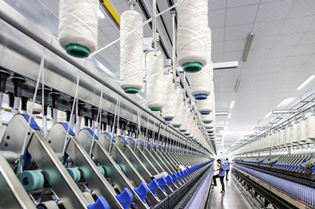Inner Mongolia works to improve environment of rural pasturing areas
Rural pasturing areas have become an increasingly important part of Inner Mongolia's environment protection work. The autonomous region put in 40 million yuan ($6.40 million) last year to protect pasturing areas and strengthen ecological environment protection, said Wang Junpu, head of the region's environment protection bureau.
The region has made efforts in developing farm animal economy and improving people's livelihood in rural pasturing areas, while steadily pushing for comprehensive governance of pasturing areas.
A total of 284 agricultural pollution reduction projects were completed in 2014, and attention was given to manage diffused pollution in rural pasturing areas. Farmers were given guidance on the use of pesticides, fertilizers and agricultural films, especially in important and sensitive ecological zones.
Meanwhile, centralized livestock and poultry farm management was enhanced, livestock and poultry feces comprehensive utilization and treatment technologies were popularized, and living environment quality in pasturing areas was improved.
The efforts paid off. A total of 12 villages and towns in Inner Mongolia were named national ecological models in 2014.
The environment protection bureau gave guidance to local villages and towns, and urged them to deal with various environment problems during evaluations for the national ecological model honor.
To date, a total of 100 local villages and towns received the honor, including Hulunbeier, Hinggan League, Tongliao, Chifeng, Xilin Gol League, Hohhot and Ordos.
As environmental quality problems are getting more attention from all walks of life, Inner Mongolia will increase funding for environmental protection every year. Last year, the region received 590 million yuan for environment protection from the central government.
Various parts of the region were very responsive to the environmental protection work after the special fund was in place. Wuhai put in 6.7 billion yuan and Baotou earmarked 6.3 billion yuan for air pollution treatment. Hohhot spent 1.35 billion yuan to deal with water pollution.
Edited by Michael Thai



 Print
Print Mail
Mail





